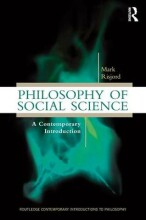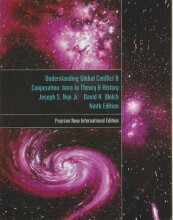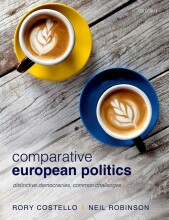Summary: Philosophy Of Social Science | 9780415898256 | Mark Risjord
- This + 400k other summaries
- A unique study and practice tool
- Never study anything twice again
- Get the grades you hope for
- 100% sure, 100% understanding
Read the summary and the most important questions on Philosophy of social science | 9780415898256 | Mark Risjord
-
1 Lecture 1: Introduction
-
1.1 What is the Philosophy of Social Science?
-
In which three broad themes can the questions distinctive to the philosophy of social sciences be encompassed?
Normativity = the place of values in social scientific inquiry
Naturalism = the relationship between the natural and social sciences
Reductionism = how social structures relate to the individuals who constitute them -
1.1.1 The Democratic Peace
-
What is the democratic peace and what question does it pose for the social sciences?
Kant made an argument that in ademocratic country , there would be asmall chance of war because thecosts are sohigh .Elected governments will bereluctant to go to war,unless thesituation wasdire . This wasone of thecases where a theoryinspired research -
1.1.2 Azande Witchcraft
-
Why is the story about Azande Witchcraft included in this book?
Azande Witchcraft is important toanthropologists , because in someethnic group incentral Africa , there wasreported thatgroups held awitch responsible andkilled thatperson for theillness ordeath of someone, because they werewitches . The question here is how can be know thecontents of another persons'mind ? Are allhumans rational ? -
1.1.3 Freedom Riders and Free Riders
-
What is the free rider problem and how is it described?
It is described asRosa Parks : sherefused to give up herbus seat to awhite passenger inMontgomery ,Alabama . If everybodystood up, thelaws could be changed. But ifone person did notparticipate in therevolution , it wouldfail . Otherwise,everyone would benefit from themovement . -
What are the two answers to the free rider problem with completely different conceptions of human nature?
Liberal =humans areautonomous choosers , eachseeking their best interest.Community is only possible when it isbeneficial Communitarians =humans arefundamentally social andoriented towards each other -
1.1.4 Philosophy in the Social Sciences
-
How will social science be understood in this book?
All systematic empirical investigation into the activities of human beings, with the special interest in those things we do together, as part of larger social groups -
1.2 A Tour of the Philosophical Neighborhood
-
In what can the discipline of philosophy be divided into?
Value theory: issues about the source and justification of values, rules and norms
Epistemology: human knowledge and how this is justified
Metaphysics: the fundamental characteristics of the world -
1.2.1 Normativity
-
On which two different ways can norms, values and rules enter the social sciences?
It is part of what thesocial sciences study & there arenorms thatsocial scientists recognize in their own society -
What is value freedom?
Must social scientific reproach be conducted without commitment to ethical or political values. => answer of many philosophers is no -
1.2.2 Naturalism
This is a preview. There are 1 more flashcards available for chapter 1.2.2
Show more cards here -
What is specifically important for metaphysical and epistemological forms of naturalism?
Metaphysical = humans are part of the natural world, and therefore they must be understood in terms of the same causes and mechanisms that animate all other creatures
Epistemological = issues about theory, explanation and method
- Higher grades + faster learning
- Never study anything twice
- 100% sure, 100% understanding





























